How to Pack for a Destination Triathlon
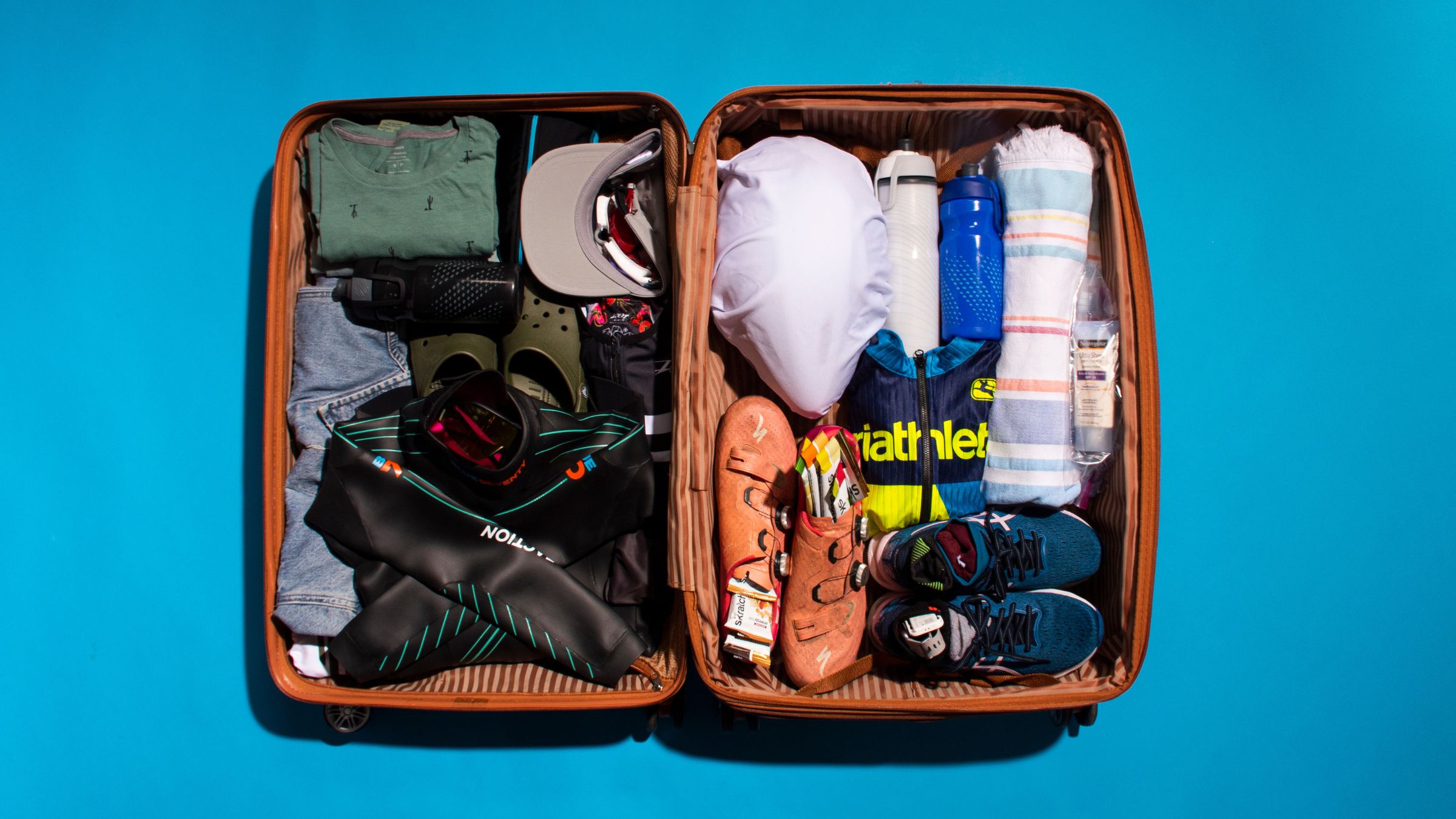
(Photo: Hannah DeWitt)
To pack for a destination race, you’re going to need the following triathlon packing list: Wetsuit, goggles, helmet, water bottles, flat kit, travel pump, run shoes, warm-up shoes, morning clothes, sunscreen, that annoying tiny screwdriver to change out the battery in your heart rate monitor strap … whew – that’s a LOT! Packing for a triathlon can be quite a process. Packing for a destination race where you may want to enjoy some holiday and/or family time after can be even more challenging, because on top of all of those items on your tri-ready checklist, you’re going to have to pack some clothes. (Unless you’re looking to wear your spandex out to dinner, in which case, more power to you.)
Don’t sweat. Thousands of triathletes before you have successfully fit it all into one suitcase. Here’s how to make your destination race prep less stressful, so you can get to the airport (and get to the fun stuff).
RELATED: Best Triathlon Race-cations and Destinations of 2022
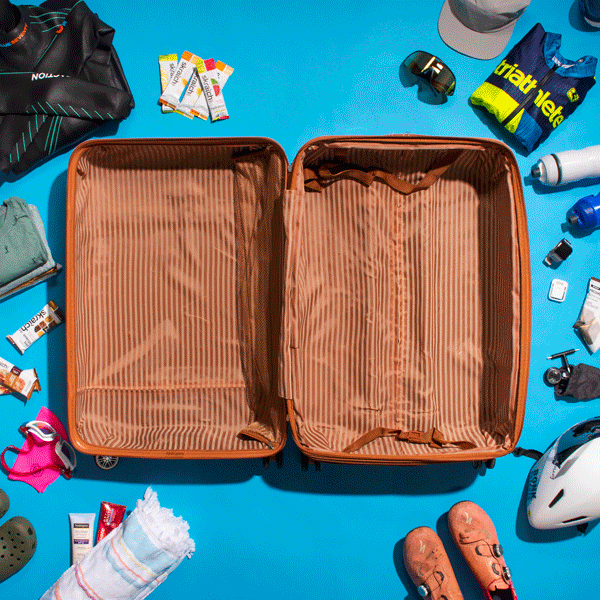
How to pack for a triathlon destination race
Make a list (and check it twice)
Like most things in life, packing becomes easier when you plan ahead. If you are a first-time traveling triathlete, consider starting the process by making a list a couple weeks out from your trip. You can easily add to it as you think of things, but it makes the process simpler when it comes time to start putting things in a bag.
Take the time to research the weather at your destination, read race reports from prior years, ask friends who have raced there in the past, and bring only what you need. It’s easy to overpack, but if you plan ahead and stick to your plan, it will make your process easier.
My own personal process involves laying things out several days before actually packing them. It helps me to double check as I am putting things into the bag, that I have everything I need, and oftentimes, gives me an opportunity to put a few things back that I have unnecessarily packed.
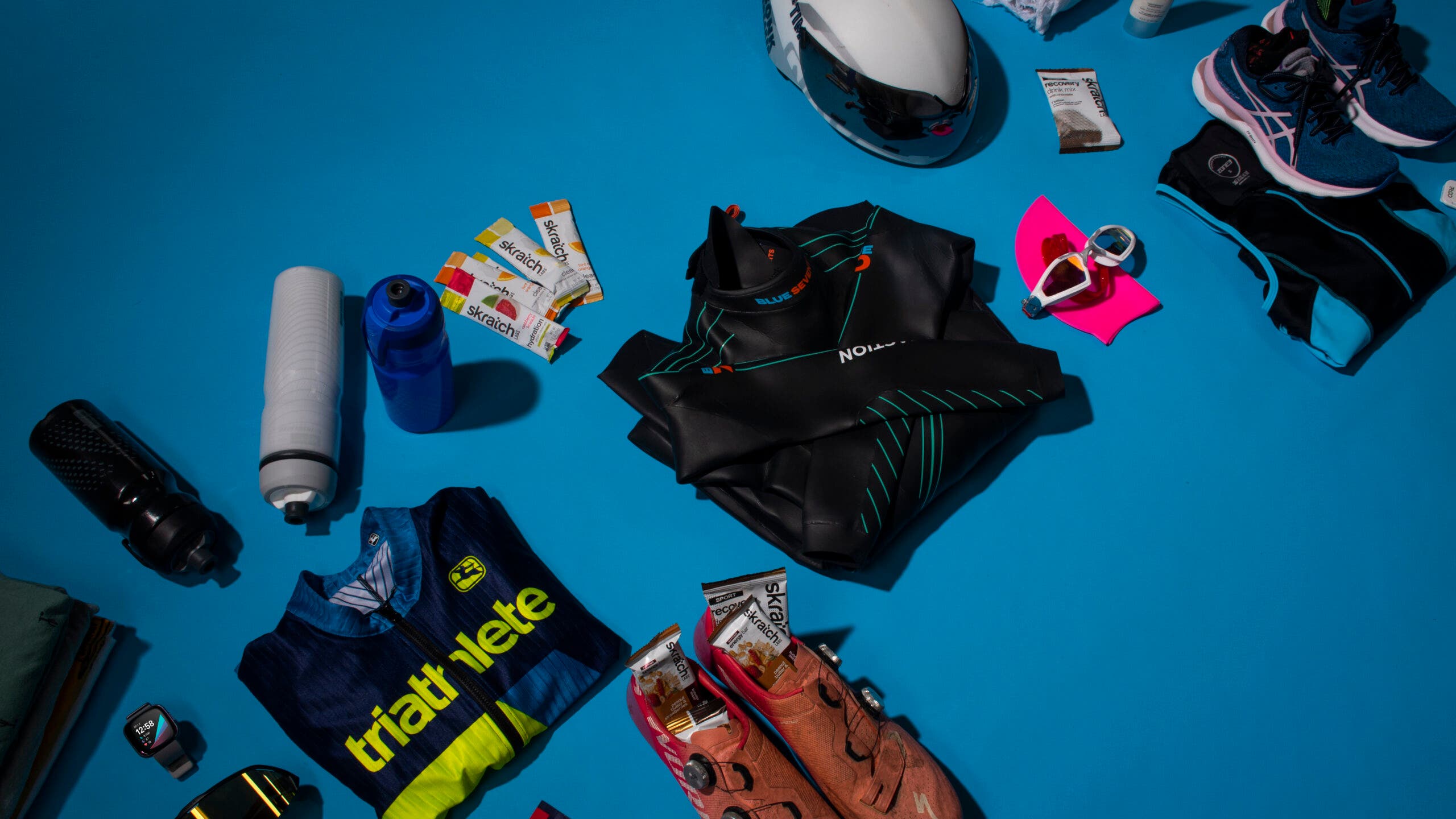
Know your luggage limits
But first things first! As you plan your trip, be sure you know your luggage allowance with the airline you’re using: both the number of bags and the weight limit on each bag. This information is available on the airline website. Typically, there is a 50-pound limit for domestic travel and as much as 70 pounds for international travel (and in some cases, for premier travelers). If you know these numbers before you go, you can pack what you need without going over and opening yourself up to baggage surcharges.
RELATED: Which Airline Has the Best Bike Fees?
Curate your suitcase
Next, selecting what to pack in. This is not as simple as you think. The ideal suitcase for triathlon, in my opinion, has several compartments/pockets/sections so that you can easily separate equipment: tri kit and gear, clothes for the race expo and events, and clothes for some rest and recovery surrounding the race. However, all those extra sections, zippers, pouches, etc. can add weight to your bag. In other words, the bag itself is heavier than a more straightforward suitcase. No doubt the convenience of such a suitcase is ideal, but ultimately you may want to sacrifice the ease of compartment packing for the ability to pack more in a lighter, single compartment duffel bag.
Another important detail in is to make sure your luggage has wheels. There is nothing worse than arriving at your destination race with a sore neck and shoulders from lugging heavy bags with shoulder straps through airports.
Cut your luggage load in half with one simple trick
As you are making your list, and/or laying out your things for packing, again, do your research. Will your destination accommodation have laundry facilities? Check with your hotel or rental home. If laundry is available, you can easily half your packing list and with one simple load of laundry mid-trip? You can cut back on a lot of packing hassle if you don’t mind doing laundry. (A washing machine can also help you avoid the funky malodor of packing a soaked race kit into your suitcase, then forgetting about it for a week. There are just some smells you can’t wash out, so be proactive and do a quick wash and dry after your race.)
Divide, conquer, and squish
Once you’ve decided what to bring, it’s time to sort out how to pack it. Distribute your weight between your bags. Split heavier items between bags, again, to balance the weight and keep your bags under the weight limit.
One pro tip worth considering, whether using a suitcase or a roomier duffel bag, is to consider space-saving bags; somewhat akin to the “Incredible Vacu-Bags, As Seen On TV!” from the 1980s, today’s modern space saver bags require vacuum to suck out the air. Instead, these bags are equipped with a special valve that allows you to squeeze out the air by rolling the contents. These space-savers will allow you to organize your belongings in a roomier bag, and can help you save on space as well.
Contain the mess
Always pack your sports nutrition (gels and powders), anti chafe products, chain lubes, sunscreens, and other ‘disasters waiting to happen’ in double Ziplock bags. There are few things worse than unzipping your bag at your destination to realize there’s been an explosion during travel.
Water bottles are another hidden gem of available space. Smaller items can be packed inside of water bottles; gels, for example, or Ziplock bags of pre-measured sport drink can easily be stashed inside the bottles during travel, opening up space in your bag. The key to getting the most out of your suitcase is to find any available space and fill it.
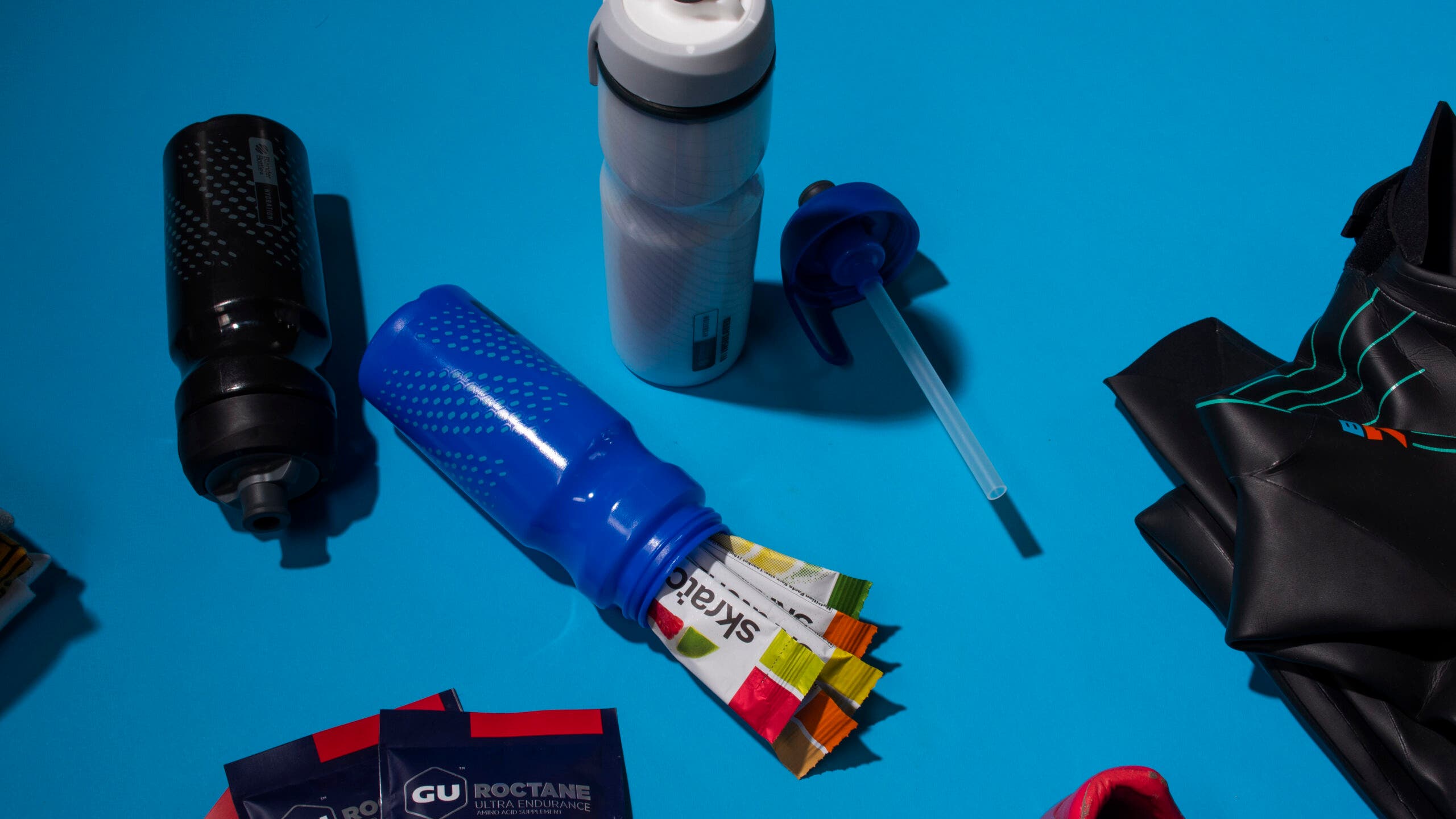
Essentials go in your carry-on
With all the stories about lost luggage these days, it’s understandable you might feel nervous about learning you’ve arrived to your destination but your race gear hasn’t. That’s why you need to delegate certain essential items to go in your carry-on bag to travel with you at all times.
I know, I know – when you’ve trained for a race for an entire year, everything you’re packing feels essential. But until the airlines make bike-box-sized overhead compartments, you’re going to have to make decisions about what to pack in your checked bags and what to bring in your carry-on.
Mission-critical items in your carry-on bag include:
- Race kit
- Goggles
- Bike shoes
- Run shoes
At the very least, if your luggage is delayed, you have your most essential items to carry on with at least some of your pre-race training and show up to your race appropriately dressed. Some people also bring their pedals with their bike shoes, so in a worst-case situation, you can pop your pedals onto a rental or borrowed bike and still get the thing done.
If you take medications for a health condition, those should also go in your carry-on bag, so that you do not have to try to find a pharmacist to refill essential prescriptions in a different state or country.
Pro tip: Your triathlon bag can double as your carry-on bag. Double-check your size parameters for carry-ons set by the airline you’re flying, but most tri bags will fit in the overhead storage compartment, no sweat.
Build a weight pyramid
I always put heavier items in the bottom of the bag near the wheels of the suitcase, then build progressively lighter items toward the top. Chances are the heavier items will settle to the bottom of the bag anyway, so putting them there to begin with will minimize items shifting during travel. Weighting the base of the bag adds stability to the wheelbase as well, for an easier time in the airport.
I also like to put my wetsuit in the middle of the bag, away from the edges. In the unlikely event something pierces the outside of your bag, the more fragile neoprene will be safer if surrounded by other times. If there are other fragile items, be sure to wrap it in clothing for added padding.
RELATED: How To Fold Your Wetsuit For Travel
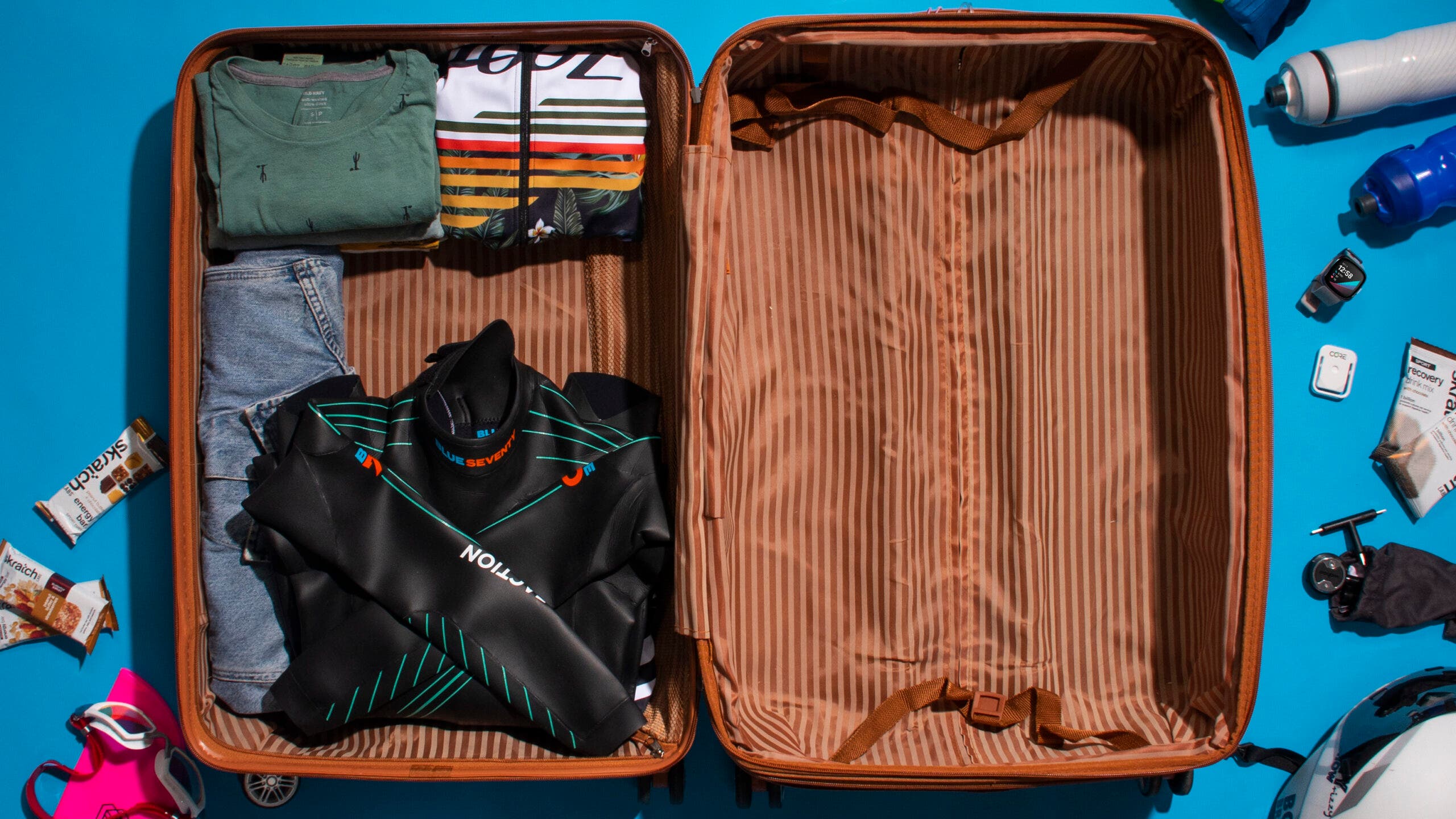
More pro packing tips
Still running low on space? Here are a few tips to make it all work!
Purchase travel size toiletries if necessary. They cut down on weight and space as compared to conventional sizes.
Make use of all open spaces: roll socks and pack them inside of your shoes, or slide your sunglasses in your shoes. It will protect them and it makes efficient use of space.
Rolling (not folding) your clothes makes for more compact packing. Sure, it takes extra time, but if it means you can fit in everything you need, It’s worth the extra step.
If you’re traveling with a bike box, use extra space as you’re able (and as weight restrictions allow) to stash things like your transition towel or extra training clothes. For more on packing your bike box, we’ve got step-by-step instructions here: A Pro’s Guide to Packing and Traveling With Your Bike.
Once everything is packed, consider using a TSA-approved lock on all your luggage. Im not distrusting of the TSA, but a lot of your equipment, sunglasses, even race shoes these days are not expensive – better safe than sorry, I say. While you’re putting on that lock, make sure your luggage is clearly marked with your identification both outside and inside. Sometimes, external tags are ripped or fall off, so I always stash a business card inside as well for back up identification.
Also, consider an Apple Air Tag or a similar tracking device. Some airlines offer luggage tracking through their app, but items aren’t always scanned, so one never quite knows if it was a lazy scanner, or if your luggage was left on the tarmac. Air Tags can give you peace of mind that your luggage is with you on board the plane, and if not, you can help advocate for yourself by locating your own luggage and coaching the airline in getting it to you.
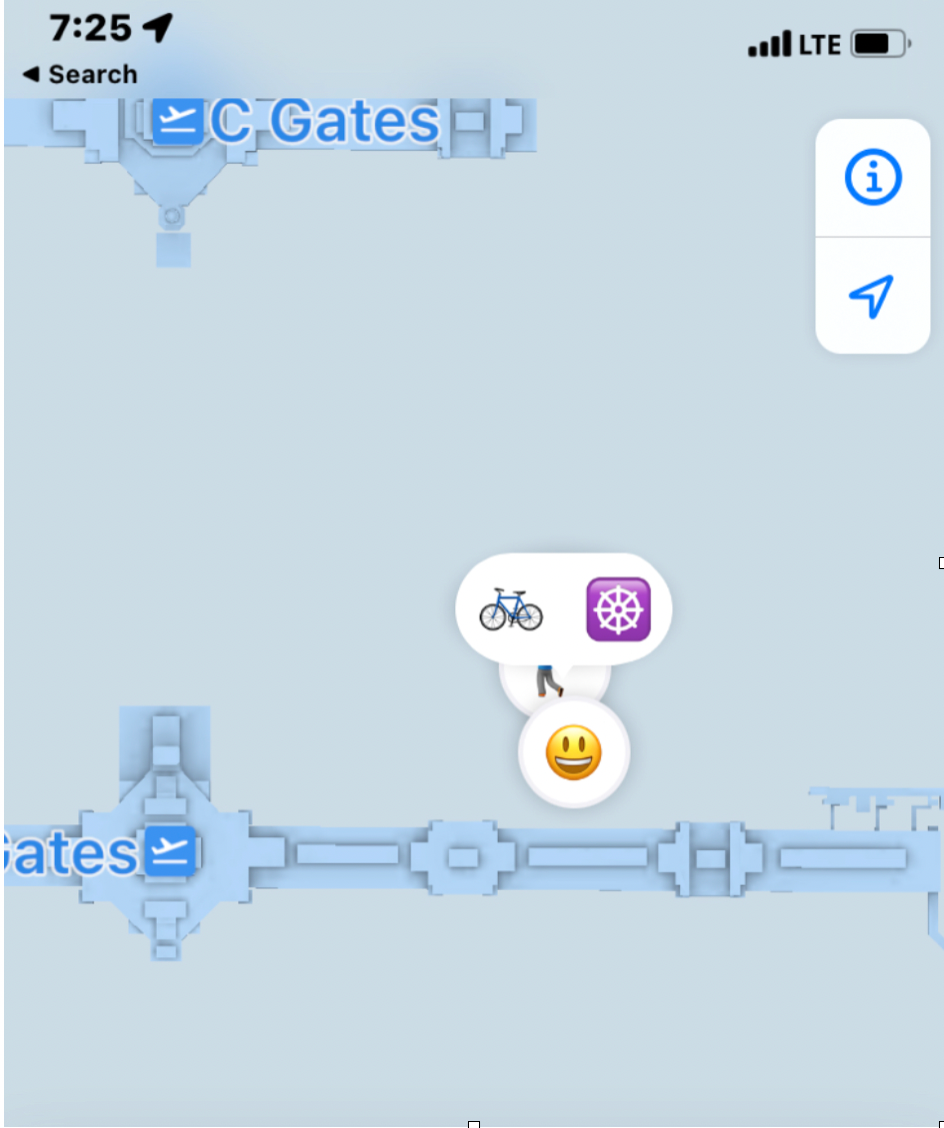
What not to pack
CO2 cartridges are prohibited in your luggage. Be sure to remove them prior to travel. Leaving them in your luggage can lead to extra screening, luggage delays and the possibility your luggage doesn’t make your flight! Remember, ou can purchase CO2 at a local shop or at the race expo and someday, SOMEDAY, someone will come up with a CO2 rental program where you can pick up your race day CO2 and return it post-race for a nominal fee. (I cringe and the number of CO2s I’ve left in hotels and rental homes after purchasing them for race day….but I digress.)
While powders are allowed in carry-ons, I’ve had gels confiscated, even if they are smaller than 3 ounces. Believe it or not, even sport drink powders can open you up to additional screening. I’ve been held up in security lines for that before, though ultimately let through. If you’re the type who likes to breeze through security as quickly as possible, put the sports nutrition in your checked bag.
Make sure your tools go in your checked luggage. While items are familiar and innocuous to you, TSA agents don’t know what an Allen wrench is. I once got into a knock-down, drag-out argument with a TSA agent over a massage gun. TSA considered it a power tool, and therefore prohibited it. Arguing costs time and adds frustration, so when in doubt, put it in your checked bag.
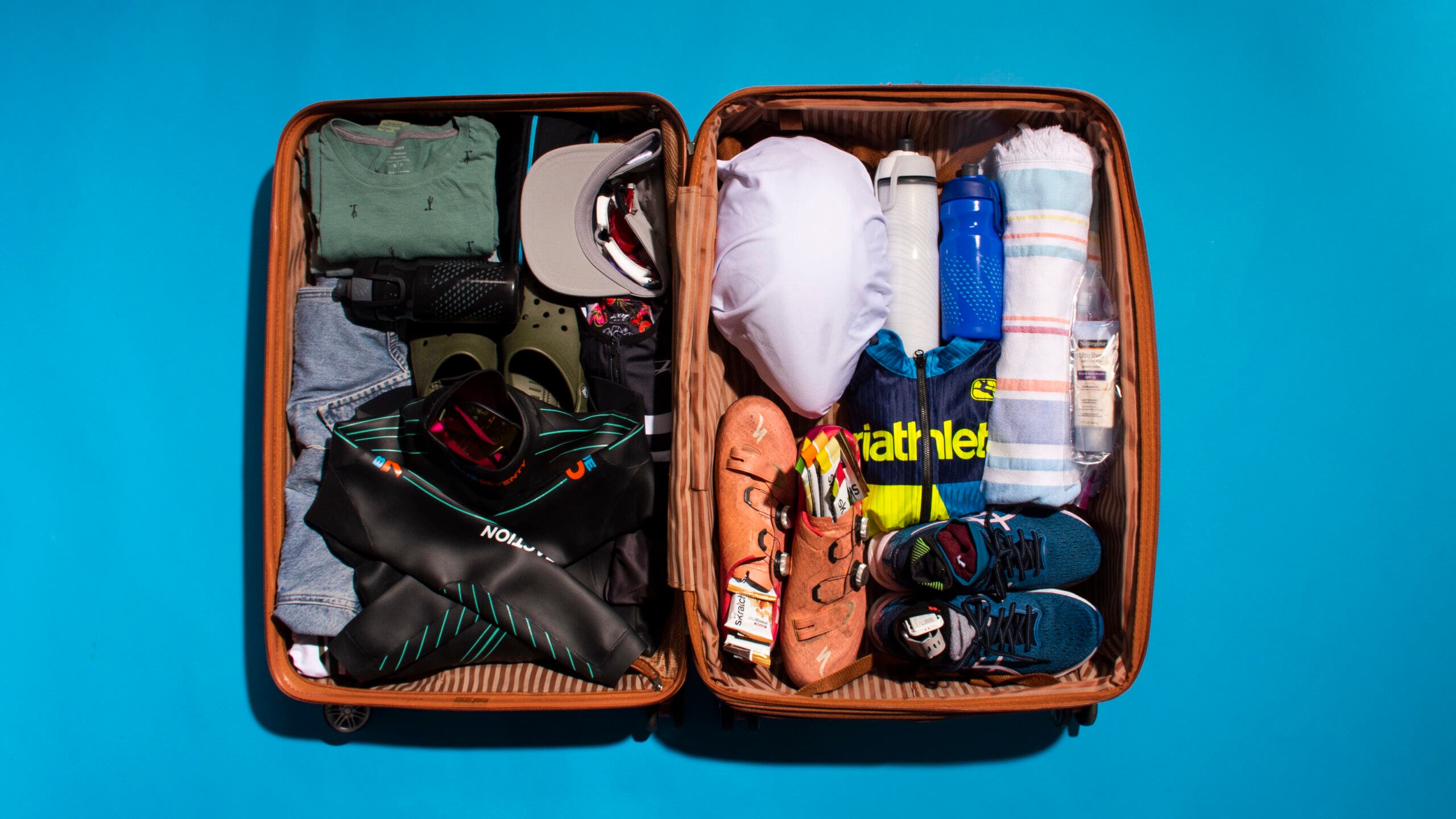
Once you are efficiently packed, locked and tracked, be sure to weigh your suitcases on your home scale (or with a luggage scale, if you have one) one last time before leaving home to make sure you’ve got it right and can breeze through the airport with ease to your destination race!
Triathlon packing list for your destination race
| Triathlon Travel Packing List |
| Swim cap |
| Goggles |
| Tri suit |
| Heart rate monitor |
| Wetsuit |
| Swimskin |
| Anti-chafing products |
| Transition towel |
| Bike shoes |
| Helmet |
| Sunglasses |
| Bike computer |
| Bike |
| Water bottles |
| Bike nutrition |
| Flat kit |
| Travel pump |
| Race shoes |
| Socks |
| Race belt |
| Hat or visor |
| Smartwatch |
| Run nutrition |
| Warm-up trainers |
| Morning clothes |
| Flip-flops |
| Sunscreen |
| Electrical tape |
| Elastic bands |
| Basic bike tools (Allen key, torque wrench, small screwdrivers) |
| Spare batteries for power meter + heart rate monitor |
| Di2 charger |